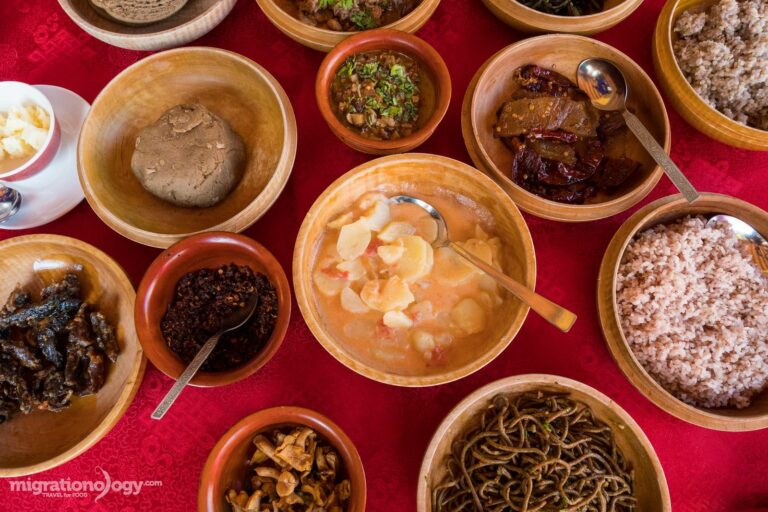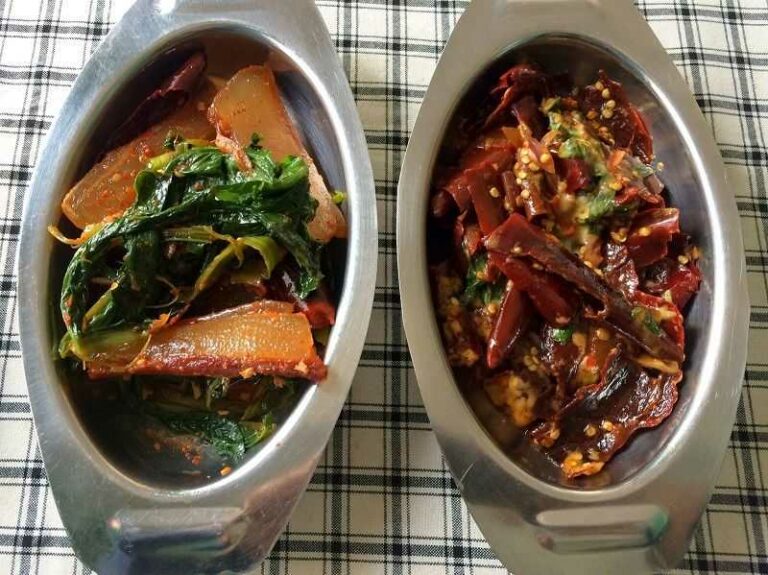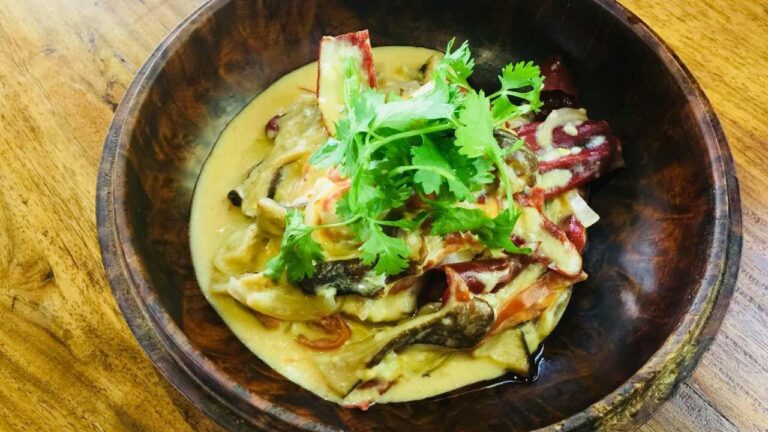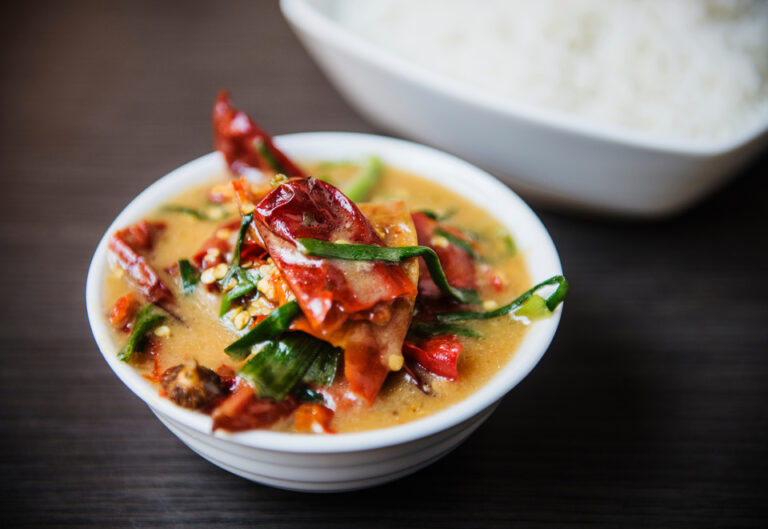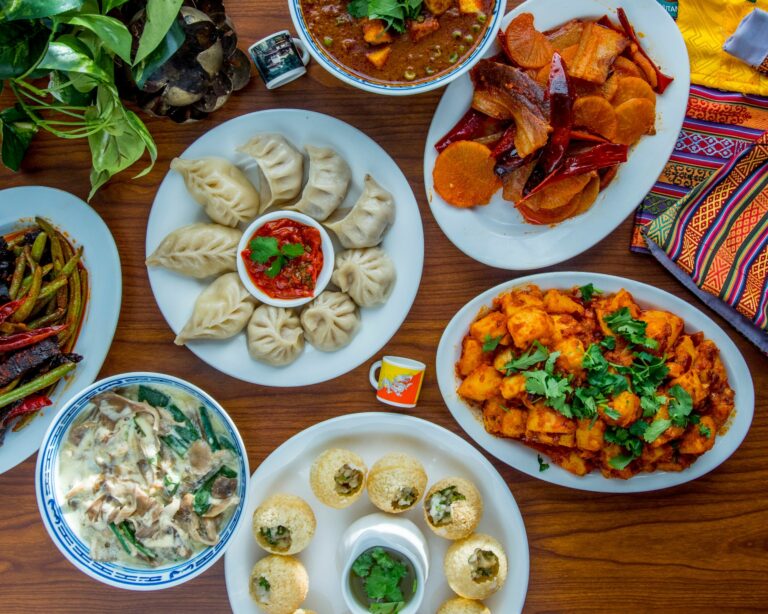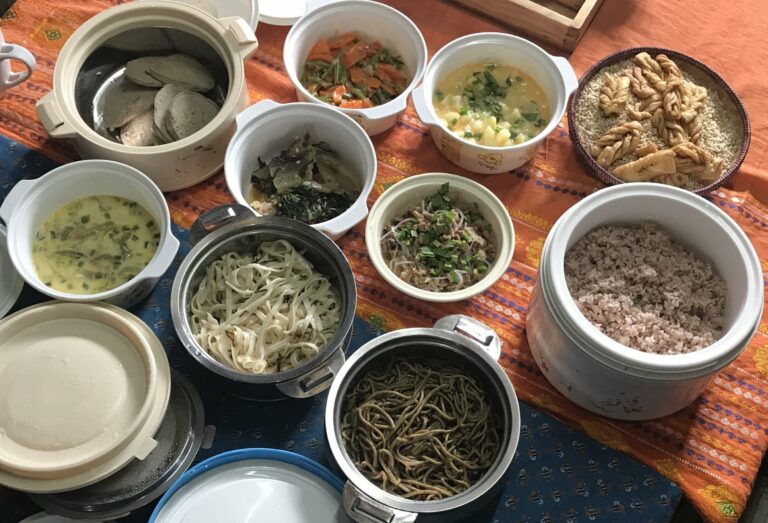Introduction: Bhutanese Cuisine
Bhutanese cuisine is a unique blend of spicy and savory flavors, with an emphasis on chilies and cheese. The country’s geography, climate, and cultural traditions have influenced its cuisine, but it has also been shaped by its neighboring countries. Bhutan shares borders with India, Nepal, Tibet, China, Bangladesh, and Myanmar, and each of these countries has had an impact on Bhutanese cuisine. In this article, we will explore how Bhutanese cuisine has been influenced by its neighbors.
The Influence of India on Bhutanese Cuisine
India has had a significant influence on Bhutanese cuisine, primarily through the use of spices. Indian spices such as cumin, coriander, and turmeric are commonly used in Bhutanese dishes. Indian cuisine has also influenced Bhutanese street food, with momos (dumplings) being a popular snack in both countries. Bhutanese cuisine also has a version of the Indian bread called naan, which is known as bhakari in Bhutan.
The Impact of Nepal on Bhutanese Cuisine
Nepalese cuisine has also influenced Bhutanese cuisine. The Nepalese dish called dal bhat (rice and lentils) is a staple in Bhutanese households and is often served with Bhutanese chili sauce. The Nepalese noodle soup called thukpa is also popular in Bhutan, with a Bhutanese version called puta that includes cheese. Bhutanese cuisine also has a version of the Nepalese dish called momo, which is known as juma in Bhutan.
Tibet’s Influence on Bhutanese Cuisine
Tibetan cuisine has had a significant impact on Bhutanese cuisine, especially in the northern regions of the country. Tibetan dishes such as thukpa (noodle soup) and momos (dumplings) are popular in Bhutan, with a Bhutanese version of momo called hoentay. Bhutanese cuisine also has a version of the Tibetan dish called tsampa, which is made from roasted barley flour.
The Role of China in Bhutanese Cuisine
China has also influenced Bhutanese cuisine, particularly in the eastern regions of the country. Chinese cuisine has influenced Bhutanese street food, with Chinese-style fried rice and noodles being popular snacks. Bhutanese cuisine also has a version of the Chinese dumpling called jasha maroo, which is made with minced meat and vegetables.
The Influence of Bangladesh on Bhutanese Cuisine
Bangladeshi cuisine has had a limited influence on Bhutanese cuisine, primarily through the use of lentils and vegetables. Bhutanese cuisine has a version of the Bangladeshi dish called dal, which is a lentil soup. Bhutanese cuisine also has a version of the Bangladeshi dish called bhaji, which is a vegetable dish.
The Impact of Myanmar on Bhutanese Cuisine
Myanmar has had a limited influence on Bhutanese cuisine, primarily through the use of noodles. Bhutanese cuisine has a version of the Burmese noodle soup called khao suey, which is known as thukpa in Bhutan. Bhutanese cuisine also has a version of the Burmese dish called mohinga, which is a fish soup.
Conclusion: A Fusion of Neighboring Influences in Bhutanese Cuisine
Bhutanese cuisine is a fusion of the various influences from its neighboring countries. The use of spices from India, lentils from Nepal, and cheese from Tibet have all contributed to the unique flavors of Bhutanese cuisine. The influence of China and Bangladesh may be limited, but they have still left their mark on Bhutanese cuisine. Bhutanese cuisine is a testament to how cultural exchange can shape and enrich a nation’s cuisine.

